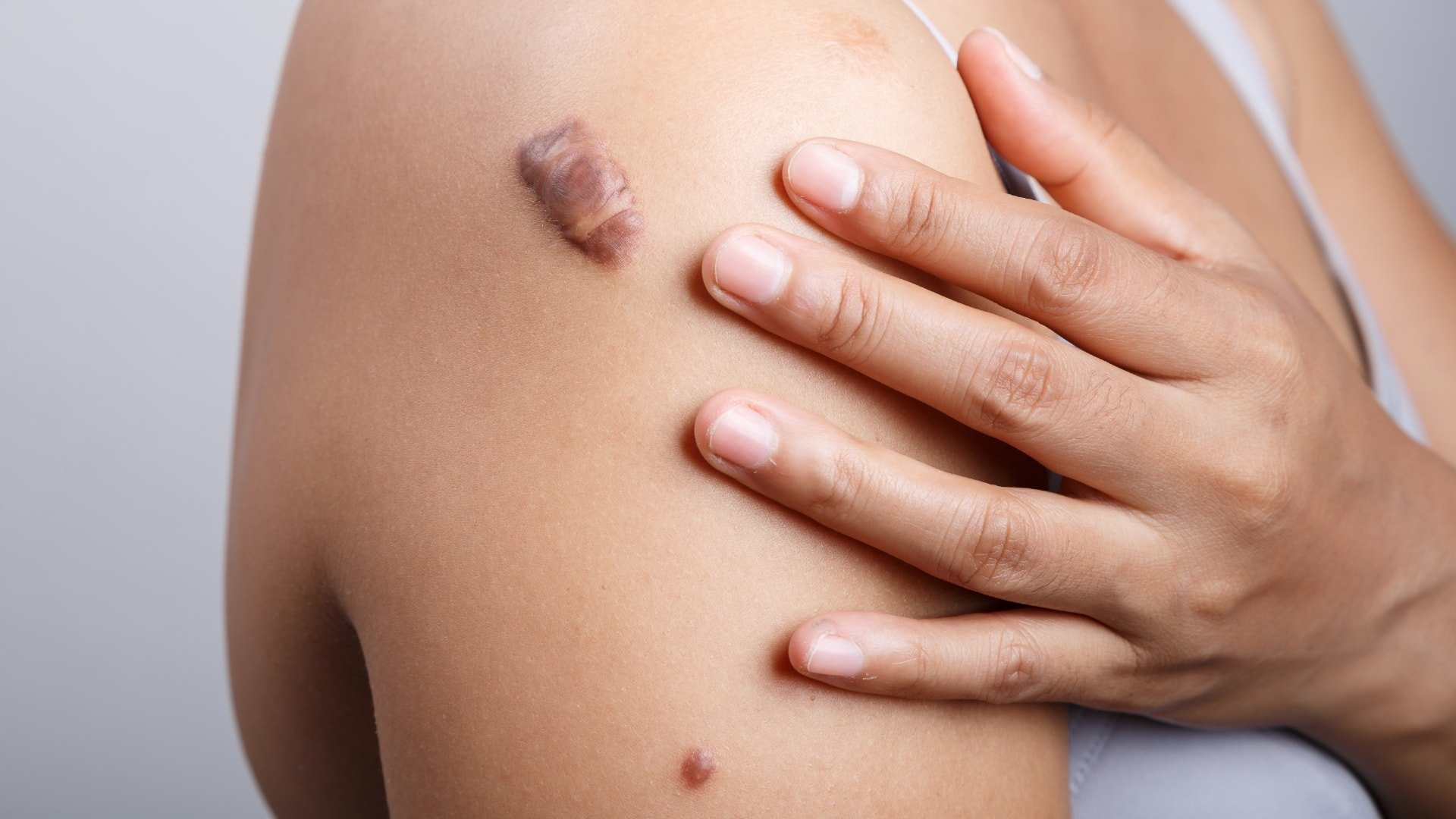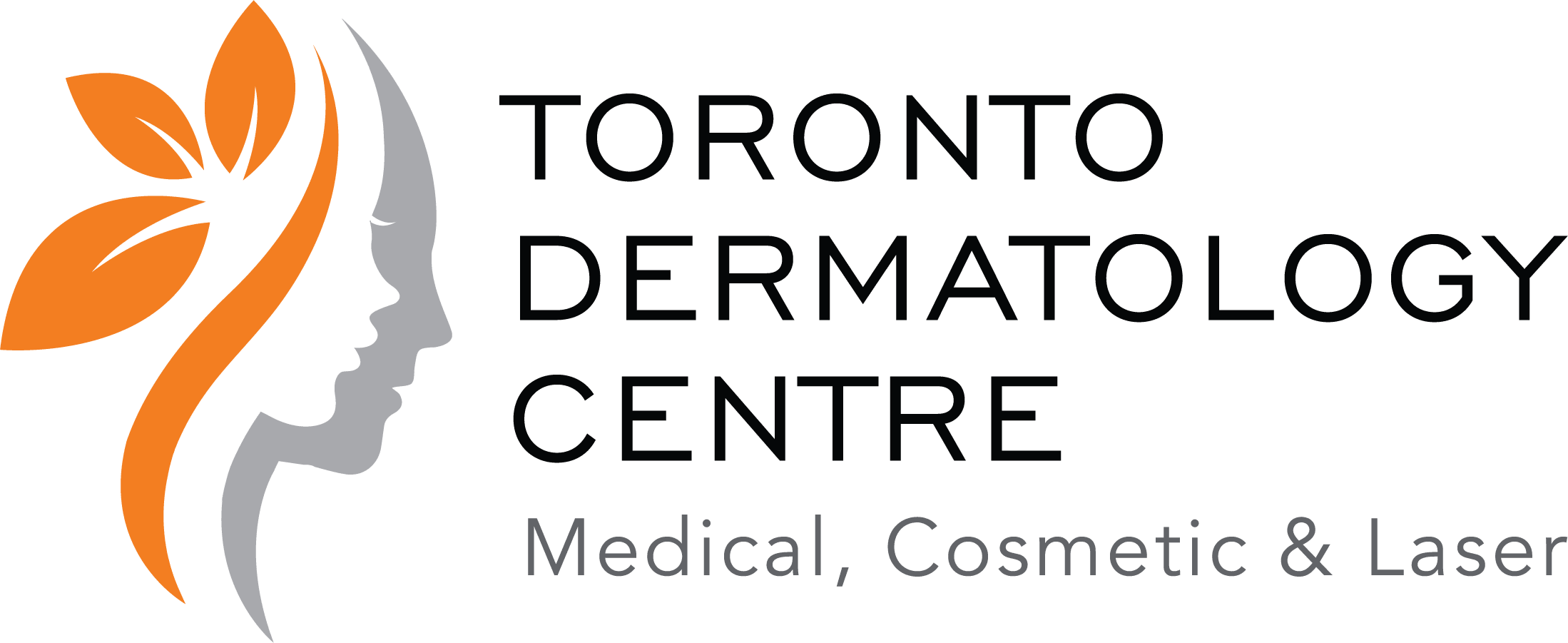Keloids are an abnormal wound healing response that occurs after injury (e.g. car accident, surgery, immunization, ear piercing) or inflammation (e.g. acne). They are benign thickenings of dense connective tissue, typically reddish (though sometimes a little brown or even flesh-coloured) and firm to hard. Keloids, unlike “hypertophic scars” typically extend beyond the borders of the original wound, and they do not disappear on their own.
While many people are bothered by the cosmetic appearance of keloids, keloid scars can also be itchy or painful, and the psychosocial burden of these lesions depends on the patient’s age, symptoms (e.g. pain, itch), the location of these lesions (visible lesions like earlobe or jawline can be more bothersome than hidden lesions), and whether there is functional impairment.
Keloids are most common on the chest, shoulders, upper back, back of the neck (sometimes called “acne keloidalis nuchae”), lower belly (e.g. C-section scar), jawline and earlobes. Less commonly, keloids can occur elsewhere. Keloids can develop up to 1 year after resolution of the initial injury.

Keloids are more common in people of African, Hispanic and Asian descent. Genetics may play a role in keloid development.
Our medical team are experts in keloid scar treatment and are happy to discuss a treatment plan that’s right for you.
Prevention
When possible, keloids should be prevented. Patients with risk factors such as dark skin or a family or personal history of keloids should avoid body piercings and unnecessary or elective surgeries (especially on the upper body).
Treatment
Treating keloids can be a challenge, and while there are many good treatment options now, the area where the keloid was will never be perfectly normal skin so prevention is still key.
Treatment options include intralesional cortisone/steroid injections, surgical excision, liquid nitrogen cryotherapy, radiotherapy, laser treatment, silicone gel sheeting, and anti-metabolites such as 5-FU. Combination therapy of say intralesional kenalog and 5-FU, or liquid nitrogen and intralesional kenalog and laser treatment can often be more effective than single modality therapy.
Intralesional (“injection into the middle of the lesion”) cortisone/steroid injections are considered the mainstay of therapy, and they are quite effective in flattening keloids, softening them, and reducing symptoms such as itch or discomfort of keloids. Injections take place every 4-6 weeks, and the number of treatments required depends on the size, thickness, firmness, and age of keloids, but most people require between 2-8 treatments. Other therapies such as liquid nitrogen are often combined with intralesional steroids. At Toronto Dermatology Centre, we have found particular success in combining 5-FU with steroids for an enhanced response, +/- along with liquid nitrogen therapy. Note that sometimes keloids recur years later in the same spot and may thus require re-treatment.
Cryotherapy or liquid nitrogen (very cold nitrogen, about -196 degrees Celsius from a canister) is a good treatment option for lighter skin types, and often is combined with intralesional steroid therapy for better results.
Radiotherapy is a much less commonly employed treatment (typically performed at a hospital) as there is a risk of skin cancer development, and access to radiotherapy is not so readily available for keloids.
Laser or light therapy can be used to soften keloids, and/or more commonly to reduce the redness and discolouration of previously treated keloids. Most commonly this occurs with a precise vascular laser such as Excel-V.
Silicone gel or sheeting is beneficial immediately after surgical excision (of a keloid or other lesion), and should be applied or worn for 12hrs a day for at least a month.
Side effects of these various treatments are generally mild, and include discomfort and discolouration of the skin where the keloid is or immediately adjacent to it.
Here is a selection of scientific medical publications by our renowned dermatologists Dr. Benjamin Barankin and Dr. Anatoli Freiman as they pertain to keloid scars. Toronto Dermatology Centre is proud to be among the largest and most comprehensive treatment centres for keloid scars in Canada.
Thinking of visiting Toronto’s premier skin clinic soon?
Fill out the inquiry form below and let us know your area of interest.
Call us today @ 416.633.0001
